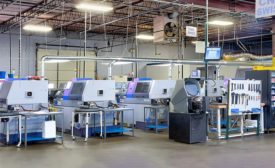Featured on Home Page
Eddy Current
With the latest instruments and probes, eddy current array strikes a balance in speed, POD, and cost effectiveness on big jobs.
Read More
Back 2 Basics
The 101 on XRF Analyzers
Experts share details on the ins and outs of this technology
April 8, 2021
2.5D Vision Hits Sweet Spot for Collaborative Applications
Automation can be deployed without having to redesign large parts of your facility.
April 8, 2021
2021 Quality Professional of the Year: Navin S. Dedhia
Five continents, one quality vision.
April 8, 2021
VISION GUIDED ROBOTICS
Best Practices for Implementing Vision Guided Robotics
An important first step in any application is a thorough project evaluation prior to system design and implementation.
April 8, 2021
Special Gage Solutions Optimize Measurement for Many Unique Applications
Discover gaging solutions for manufacturers in the automotive, aerospace, power generation, food and medical industries.
April 7, 2021
Guide to Contracting Calibration Services
Many organizations today require ISO/IEC 17025 accredited calibrations, but simply requesting an accredited calibration is not enough.
April 7, 2021
Four Things Your ERP System Should Do For You
ERP systems can vary widely in size, scope, features, and functionalities, depending on the needs of different manufacturers.
April 7, 2021
VISION & SENSORS - AUTOMATION
Don’t Try to Beat AI, Join It!
Automation will give, as well as take, opportunities for human workers.
March 9, 2021
Stay in the know with Quality’s comprehensive coverage of
the manufacturing and metrology industries.
eNewsletter | Website | eMagazine
JOIN TODAY!Copyright ©2024. All Rights Reserved BNP Media.
Design, CMS, Hosting & Web Development :: ePublishing

.jpg?height=168&t=1621530074&width=275)








